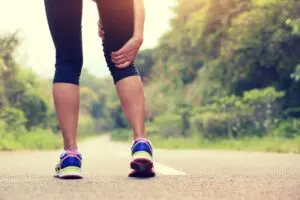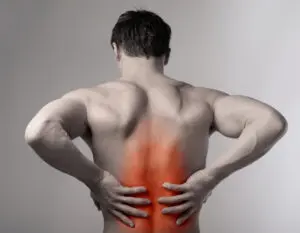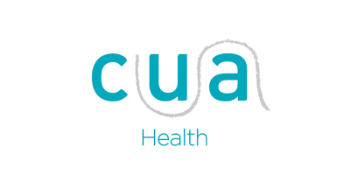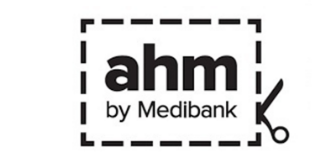What is Thermotherapy?
Thermotherapy is the application of hot or cold interventions and can be an excellent natural pain relief option.
Thermal therapies work by affecting the superficial, intra-articular (joint structures) and core temperature of soft tissues. Appropriate use of cryotherapy (decreasing temperature) and thermotherapy (increasing temperature) is useful for treating numerous musculoskeletal conditions and injuries, and providing natural pain relief. Ice or heat often decreases pain in muscles, tendons and joints. These interventions have the opposite effects to each other on edema, blood flow, inflammation, cellular metabolism, and tissue tension.
Why would I use thermotherapy for natural pain relief?
The benefits of heat therapy
- When the temperature of the skin/soft tissue increases – blood flow increases through an effect called vasodilatation. Vasodilation occurs in the capillaries – the smallest and most numerous blood vessels and means that the muscles in the walls of the vessels relax (like opening a tap to full) permitting more blood to travel through the vessel. As a result cellular metabolism increases. In theory, this will increase the healing response by promoting inflammation – which may or may not be desirable for your injury.
The benefits of cold therapy
- When the temperature of the skin/soft tissue decreases the blood flow slows down through a process called vasoconstriction. Tissue metabolism will also slow – neuronal excitability (nerve conduction – pain bandwidth), inflammation also reduce, as does tissue extensibility (structures tighten up). When joints decrease below 30°C the activity of cartilage damaging enzymes such as protease, hyaluronidase and elastase is inhibited. A slow metabolic rate reduces further damage.
How do I use Thermotherapy?
The most common methods of applying heat to soft tissues are heat packs. baths, saunas, and infra-red lamps.
The most common methods of applying cold to the tissues are frozen gel packs, ice baths, ice and coolant sprays.
What are the Effects?
THe effects of heat and cold are well documented and can be a natural pain relief option.
- heat improves blood circulation and encourages relaxation in the muscles while decreasing stiffness in the joints(blood flow).
- Cold usually decreases pain, swelling and slows down the metabolism.
What Conditions is Thermotherapy effective for?
You can gain natural pain relief using thermotherapy for many different conditions, some include
- Low back pain
- Neck & shoulder pain
- Menstrual pain
- Sciatica pain
- Tendon and nerve pain
What Precautions should I take?
People with decreased sensation, such as diabetic neuropathy in the feet – are not advised to use thermo-therapies in the area with reduced sensitivity. Burns can easily occur.
Frequently Asked Questions (FAQs)
Thermal therapies work by affecting the superficial, intra-articular (joint structures) and core temperature of soft tissues. Appropriate use of cryotherapy (decreasing temperature) and thermotherapy (increasing temperature) is useful for treating numerous musculoskeletal conditions and injuries and providing natural pain relief. Ice or heat often decreases pain in muscles, tendons, and joints. These interventions have the opposite effects to each other on oedema, blood flow, inflammation, cellular metabolism, and tissue tension.
The most common methods of applying heat to soft tissues are heat packs. baths, saunas, and infra-red lamps. Usually after a remedial massage heat is the better option to reduce muscular tension returning.
The most common methods of applying cold to the tissues are frozen gel packs, ice baths, ice, and coolant sprays.
The benefits of heat therapy
When the temperature of the skin/soft tissue increases – blood flow increases through an effect called vasodilatation. Vasodilation occurs in the capillaries – the smallest and most numerous blood vessels and means that the muscles in the walls of the vessels relax (like opening a tap to full) permitting more blood to travel through the vessel. As a result cellular metabolism increases. In theory, this will increase the healing response by promoting inflammation – which may or may not be desirable for your injury. Usually after a remedial massage heat is the better option to reduce muscular tension returning.
The benefits of cold therapy
When the temperature of the skin/soft tissue decreases the blood flow slows down through a process called vasoconstriction. Tissue metabolism will also slow – neuronal excitability (nerve conduction – pain bandwidth), inflammation also reduce, as does tissue extensibility (structures tighten up). When joints decrease below 30°C the activity of cartilage damaging enzymes such as protease, hyaluronidase and elastase is inhibited. A slow metabolic rate reduces further damage.
The benefits of heat therapy
When the temperature of the skin/soft tissue increases – blood flow increases through an effect called vasodilatation. Vasodilation occurs in the capillaries – the smallest and most numerous blood vessels and means that the muscles in the walls of the vessels relax (like opening a tap to full) permitting more blood to travel through the vessel. As a result cellular metabolism increases. In theory, this will increase the healing response by promoting inflammation – which may or may not be desirable for your injury.
Usually after a remedial massage heat is the better option to reduce muscular tension returning via vasodilation.
The benefits of cold therapy
Applying cold to in injury has an analgesic effect through slowed inflammatory response and a process that confuses the pain receptors through the sensation of cold. When the temperature of the skin/soft tissue decreases the blood flow slows down through a process called vasoconstriction. Tissue metabolism will also slow – neuronal excitability (nerve conduction – pain bandwidth), inflammation also reduce, as does tissue extensibility (structures tighten up). When joints decrease below 30°C the activity of cartilage damaging enzymes such as protease, hyaluronidase and elastase is inhibited. A slow metabolic rate reduces further damage.
The benefits of heat therapy When the temperature of the skin/soft tissue increases – blood flow increases through an effect called vasodilatation. Vasodilation occurs in the capillaries – the smallest and most numerous blood vessels and means that the muscles in the walls of the vessels relax (like opening a tap to full) permitting more blood to travel through the vessel. As a result, cellular metabolism increases. In theory, this will increase the healing response by promoting inflammation – which may or may not be desirable for your injury. Usually after a remedial massage heat is the better option to reduce muscular tension returning. The benefits of cold therapy When the temperature of the skin/soft tissue decreases the blood flow slows down through a process called vasoconstriction. Tissue metabolism will also slow – neuronal excitability (nerve conduction – pain bandwidth), inflammation also reduce, as does tissue extensibility (structures tighten up). When joints decrease below 30°C the activity of cartilage damaging enzymes such as protease, hyaluronidase and elastase is inhibited. A slow metabolic rate reduces further damage.
When the temperature of the skin/soft tissue increases – blood flow increases through an effect called vasodilatation. Vasodilation occurs in the capillaries – the smallest and most numerous blood vessels and means that the muscles in the walls of the vessels relax (like opening a tap to full) permitting more blood to travel through the vessel. As a result cellular metabolism increases. In theory, this will increase the healing response by promoting inflammation – which may or may not be desirable for your injury. Usually after a remedial massage heat is the better option to reduce muscular tension returning.
You can gain natural pain relief using thermotherapy for many different conditions, some include
- Low back pain
- Neck & shoulder pain
- Menstrual pain
- Sciatica pain
- Tendon and nerve pain
You can gain natural pain relief using thermotherapy for many different conditions, some include:
- Low back pain
- Neck & shoulder pain
- Menstrual pain
- Sciatica pain
- Tendon and nerve pain
People with decreased sensation, such as diabetic neuropathy in the feet – are not advised to use thermo-therapies in the area with reduced sensitivity. Burns can easily occur.
You can gain natural pain relief using thermotherapy for many different conditions, some include:
- Low back pain
- Neck & shoulder pain
- Menstrual pain
- Sciatica pain
Related Posts

Neck Pain Brisbane

Sciatica Pain Treatments

Back Pain Brisbane
- V. Hurley et al., Non-exercise physical therapies for musculoskeletal conditions, Best Practice & Research, Clinical Rheumatology, 2008. 1C
- Brosseau L., Yonge K.A., Welch V. et al., Thermotherapy for treatment of osteoarthritis, the Cochrane library, 2003. 1A
- Petrofsky J., Berk L., Lee H., Moist heat or dry heat delayed onset muscle soreness, Journal of clinical medicine research, 2013. 2B
- Scott F. Nadler, DO, FACSM, Kurt Weingand, PhD, DVM, and Roger J. Kruse, MD; The Physiologic Basis and Clinical Applications of Cryotherapy and Thermotherapy for the Pain Practitioner, pain physician, 2004. 1A
- L. Kellogg Jr., In vivo mechanisms of cutaneous vasodilation and vasoconstriction in humans during thermoregulatory challenges, the American Physiological Society, 2006. 3A
- Hendee W.R., Physics of Thermal Therapy, Fundamentals and Clinical applications, By Taylor and Francis group, 2013.
- Heinrichs K., Textbook of medical physiology, Philadelphia, 1986. (chapter 16: superficial thermal modalities).
- Bleakley C.,McDonough S.,MacAuley D., The Use of Ice in the Treatment of Acute Soft-Tissue Injury: A Systematic Review of Randomized Controlled Trials, The American Journal of Sports Medicine; 2004. 1A
- Tricia J. Hubbard et al., Does Cryotherapy Improve Outcomes With Soft Tissue Injury? Journal of Athletic Training, 2004. 1A
- Ernst E., Fialka V., Ice freezes pain? A review of the clinical effectiveness of analgesic cold therapy, J pain symptoms manage, 1994. 5
- Amin A. Algafly, Keith P. George, The effect of cryotherapy on nerve conduction velocity, pain threshold and pain tolerance, Br J Sports Med, 2007. 3B
- Choi YJ et al. Therapeutic effects and immunomodulation of suanbo mineral water therapy in a murine model atopic dermatitis. 1B
- Hiroharu K., Kiichiro T., Effectiveness of Aquatic Exercise and Balneotherapy: A Summary of Systematic Reviews Based on Randomized Controlled Trials of Water Immersion Therapies, Journal of epidemiology, 2010. 1A
- Eversden L, Maggs F, Nightingale P, Jobanputra P., A pragmatic randomized controlled trial of hydrotherapy and land exercises on overall well-being and quality of life in rheumatoid arthritis, BMC Musculoskeletal Disorders, 2007. 2A
- Lacy A. Holowatz et al., Mechanisms of acetylcholine-mediated vasodilatation in young and aged human skin, The Physiological Society, 2005. 3B
- Swenson C et al. Cryotherapy in sports medicine. Scand J Med Sci Sports. 1996 Aug6(4) 1B
- Kathleen A. Sluka, PhD, PT, Michelle R. Christy, MPT, Wendy L. Peterson, MPT, Staci L. Rudd, MPT, Stacie M. Troy, MPT, Reduction of pain-related behaviors with either cold or heat treatment in an animal model of acute arthritis, Archives of Physical Medicine and Rehabilitation, March 1999. 3B
- Fahey T.D., Athletic training: principles and practice, Mayfield.
- Oosterveld F.G.J., Rasker J.J., Effects of local heat and cold treatment on surface and articular temperature of arthritic knees, American college of rheumatology, 1994. 1B
- William E. Prentice, An Electromyographic Analysis of the Effectiveness of Heat or Cold and Stretching for Inducing Relaxation in Injured Muscle, The journal of orthopaedic and sports physical therapy, 1982. 1B
- Steven E. Peres, David O. Draper, Kenneth L. Knight, Mark D. Ricard, Pulsed shortwave diathermy and prolonged long-duration stretching increase dorsiflexion range of motion more than identical stretching without diathermy, Journal of Athletic Training, 2003. 2B
- Oosterveld F.G., Rasker J.J., Treating arthritis with locally applied heat or cold, semin Arthritis Rheum., 1994. 5
kneadmassage
Latest posts by kneadmassage (see all)
- Knee Cap Pain Brisbane - July 3rd, 2023
- Calf Pain Running - July 3rd, 2023
- Natural Pain Relief with Thermotherapy - June 28th, 2023












